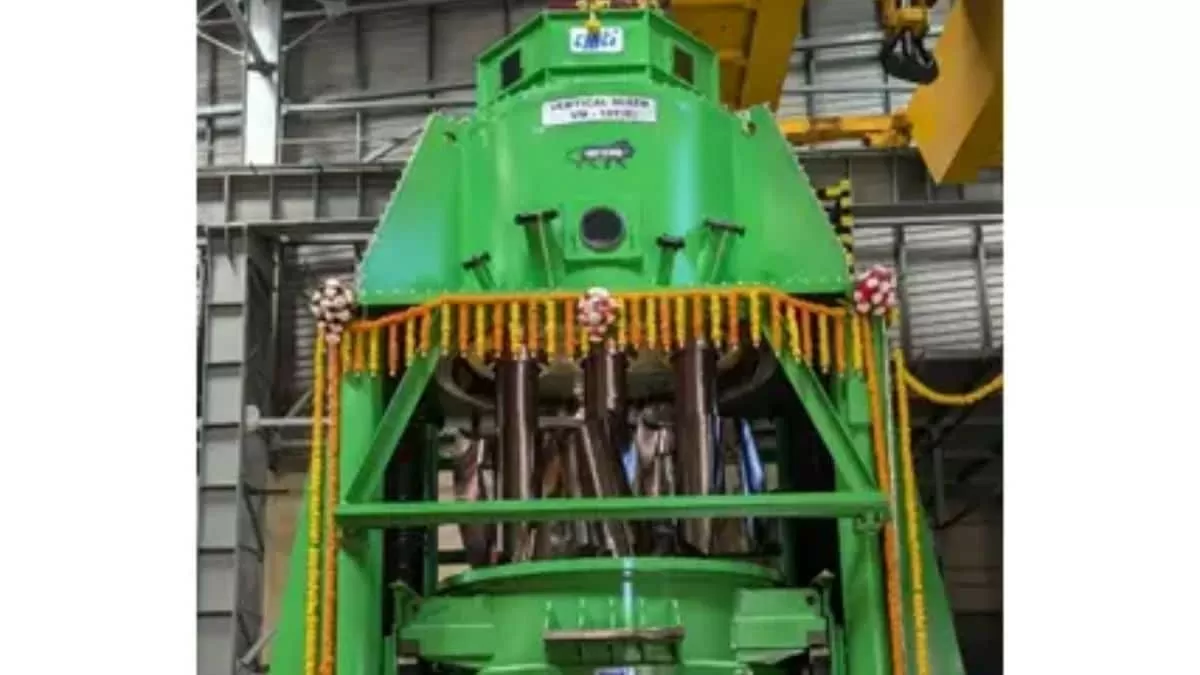ISRO, in collaboration with CMTI, has once again showcased its expertise and innovation in the field of space technology by developing a 10-tonne vertical planetary mixer, the largest of its kind for solid propellants. This revolutionary system is a major breakthrough in the production of propellants for rocket motors, as it promises to improve precision, efficiency, and safety, making it a vital contribution to India’s space program.
The Indian Space Research Organization (ISRO) has always been at the forefront of space technology, constantly pushing boundaries and breaking records. With this latest development, ISRO has yet again proved its unwavering commitment towards enhancing India’s self-reliance in the field of space exploration.
The 10-tonne vertical planetary mixer is a result of the collaboration between ISRO and the Central Manufacturing Technology Institute (CMTI), a premier research and development institution under the Ministry of Heavy Industries and Public Enterprises. The system was designed and developed at ISRO’s Vikram Sarabhai Space Centre (VSSC) in Thiruvananthapuram, and the successful factory-level tests have left the scientists and engineers involved in the project beaming with pride.
Weighing 150 tonnes, this mammoth mixer is capable of handling large quantities of solid propellants, making it an invaluable asset for ISRO’s future missions. The previous mixer at VSSC had a capacity of only 5 tonnes, which meant that multiple batches of propellants had to be mixed to meet the required quantity, resulting in increased production time and costs. However, with the new 10-tonne mixer, the production process will become more streamlined, efficient, and cost-effective.
The vertical planetary mixer operates on the principle of planetary motion, where the propellant mixture is rotated in multiple axes, ensuring thorough mixing and homogeneity. This process is crucial as any uneven distribution of propellants can lead to instability in rocket motors, resulting in potential failures. The system’s precision and accuracy are vital in ensuring the safety and success of ISRO’s missions.
One of the most impressive features of the mixer is its advanced safety measures. The entire system is enclosed in a protective structure, ensuring that any potential hazards are contained within the structure, thus safeguarding the environment and the personnel working with the propellants. The mixer also has a state-of-the-art control system, which monitors and regulates the entire production process, further enhancing safety.
The development of the 10-tonne vertical planetary mixer is a significant step towards achieving India’s goal of self-reliance in space technology. Previously, ISRO relied on importing such critical equipment from other countries, which not only resulted in high costs but also limited their capabilities. With this homegrown mixer, ISRO has reduced its dependency on foreign technology and has shown that India is capable of developing world-class equipment.
The successful factory-level tests have proved the mixer’s reliability and efficiency, and it is now ready to be deployed for actual production of solid propellants. With this new addition to their arsenal, ISRO is all set to meet the growing demands of India’s ambitious space program.
The 10-tonne vertical planetary mixer is expected to play a crucial role in ISRO’s upcoming missions, including the Chandrayaan-3 and Gaganyaan-1. It will also be utilized for the production of propellants for the Geosynchronous Satellite Launch Vehicle (GSLV) Mk III, which is ISRO’s heaviest and most powerful rocket. The mixer’s capabilities can also be extended to other industries, such as chemical and pharmaceutical, where large quantities of materials need to be mixed precisely and efficiently.
India’s space program has come a long way since its inception, and ISRO has always strived to push boundaries and achieve new milestones. The development of the 10-tonne vertical planetary mixer is another feather in ISRO’s cap and a testament to the organization’s dedication and perseverance. This achievement will not only enhance India’s self-reliance in space technology but also inspire and motivate future generations to dream big and reach for the stars.

